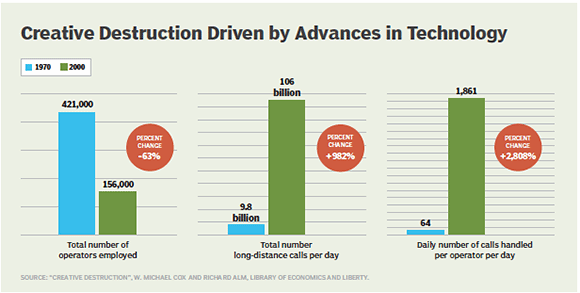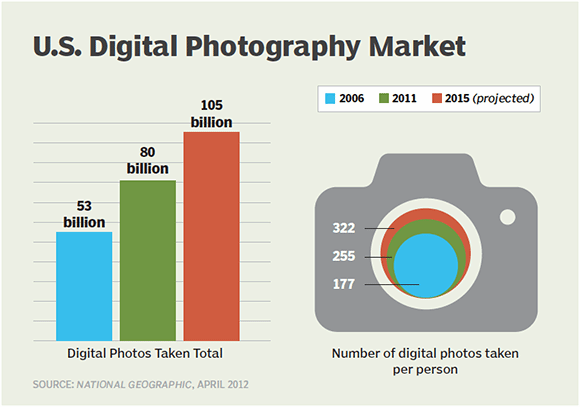CIO.com
Creative destruction and the cloud: Why it's a good thing
By Harvey R. Koeppel
"Imagine if every Thursday your shoes exploded if you tied them the usual way. This happens to us all the time with computers, and nobody thinks of complaining." -- Jef Raskin, creator of the initial concepts that became the Apple Macintosh computer, as quoted in Dr. Dobb's Journal.
I must admit that I have heard many descriptions of computing but, when I came across this exploding-shoe metaphor, it was (a) different, and (b) caught my attention. Then again, I have always been fascinated by what people have to say about technology, especially new technology, and especially new technology that is disruptive by its nature. Here are a few of my favorites:

Computers that weigh 3,000 pounds and wet pants in winter aside, one notion that the experts seem to agree upon is that cloud computing in the form of Infrastructure as a Service (IaaS), Platform as a Service (PaaS), Software as a Service (SaaS) and Everything Else as a Service (EEaaS) is real, it's present and it represents a major cycle of creative destruction within the IT industry.
More on cloud strategies
A need for speed drives State Street CIO to the cloud
CIO's innovative cloud approach
Cloud strategies from the trenches
For those of you who may not have majored in economics (not to worry, neither did I), the term creative destruction was created by Joseph Schumpeter (1883-1950), an Austrian economist who used the term to describe the natural way in which continued industrial progress and technological innovation, by definition, disintermediates the previous generation of technologies and related jobs. In effect, creative destruction defines a perpetual cycle of destroying the less efficient and incubating the more efficient.
Think business process reengineering (BPR): essentially making scarce resources (people) more productive by replacing older, less-efficient processes (and requisite skills) with newer, more-efficient processes, generally enabled by new technologies that eliminate the need for the prior generation of skill sets (and often the people).
The bottom line: the same number of people, or even fewer, producing more output in the same or less time, often with higher quality. More productivity, more competitiveness and more stakeholder value are created. All is well in the kingdom until the next generation of technology enables the next iteration of BPR, and so on. At scale, such dynamics drive significant shifts in economics, politics and culture.
Our history is filled with explicit examples of creative destruction driven by advances in technology. Consider the following analysis of the impact of electronic switching equipment deployed by the telecommunications industry upon the population of switchboard operators and their daily productivity during the period 1970 through 2000:

Source: "Creative Destruction", W. Michael Cox and Richard Alm, Library of Economics and Liberty.
Still not convinced? Consider the following:
Kodak was founded in 1892. At its peak, the company employed about 145,000 people worldwide. Kodak invented digital photography in 1974. After investing billions of dollars in research and development, the company decided not to actively market certain innovations for fear of cannibalizing its position as a market leader in film-based photography. In the year 2000, Americans were purchasing about a billion rolls of film annually. In 2011, about 20 million rolls of film were sold. In 2012, Kodak declared bankruptcy.
For additional perspective, here are a few factoids from the April 2012 edition of National Geographic regarding the growth of the U.S. digital photography market:

So what does all of this have to do with cloud? Everything. According to a recently published global cloud survey by advisory services firm KPMG LLP (The Cloud Takes Shape, 2013), "Cloud has finally started to move beyond the hype and into the very fabric of today's enterprise. Organizations around the world are gaining valuable insight into not only the potential benefits of cloud, but also the practical challenges of adopting these highly disruptive technologies."
Private clouds will help us learn and adapt to the new paradigms, but the real future will be in hybrid and public clouds.
The KPMG study further points out several clear trends within enterprises that are further along on the cloud adoption path:
- Increased attention and focus on getting business process redesign right;
- Enhanced change management processes;
- Improved business models;
- More core functions moved to the cloud.
When study participants were asked to identify their most critical objectives for moving to cloud implementations, two of the top three objectives cited focused upon increasing business effectiveness:
- Enhanced ability to enter new markets;
- Drive business process transformation.
So what is being creatively destroyed, and what does all of this mean to CIOs, IT executives and their organizations? Again: everything. We, as an industry and as a community, need to consider the following:
- Cloud technologies are rapidly changing the way in which IT services are procured and managed -- IaaS, PaaS, SaaS and EEaaS are code for outsourcing;
- Switching a major portion of IT investment from capital expense (CapEx) to operating expense (OpEx) will fundamentally shift the economics of IT management from balance-sheet to profit-and-loss accounting;
- Transitioning from relatively high-fixed-cost/low-variable-cost operating models to relatively low-fixed-cost/high-variable-cost models will provide greatly increased transparency into product/service unit costs and profitability, and enable significant progress to be made in calculating and understanding customer and relationship profitability;
- Private clouds will help us learn and adapt to the new paradigms, but the real future will be in hybrid and public clouds;
- The number of professionals involved in supporting data centers, infrastructure and applications will be significantly reduced as more and more of these functions become purchased services;
- CIOs, IT executives and their organizations will need to acquire and/or enhance their skills in
the following areas:
- Vendor evaluation, selection, negotiation, integration and management (pay per use rather than buy or build);
- Adapting and transforming business processes to conform to vendor-provided "standard" applications (configuration rather than customization);
- Data sciences, modeling and analytics (compete based on breadth and depth of information and insight rather than on product features and functions);
- Business model transformation (focus on new markets, new customer types, new revenue sources and new work environments, e.g. remote workforce, rather than growing existing market share and reducing expenses);
- Significantly flattened organizations (focus on developing and operating within communities enabled by collaboration with customers, supply chain partners and other stakeholders rather than working within hierarchical command and control style organizational structures);
- Creating and enhancing value-added consultative relationships (focus on working with business partners to more clearly articulate business opportunities and challenges rather than on creating and "selling" technical solutions to less well-defined problems).
You may or may not agree with some or all of what I have outlined above, but the undeniable fact is that we are living through an inflection point during which many things have already changed and both the velocity and magnitude of changes yet to come seem to be increasing. You have a choice to make: You can embrace the change and be part of the leadership that plots our future course, or you can resist the change and perhaps begin a new career as an entry-level switchboard operator.
One final comment: No shoes were actually exploded or damaged in any way during the writing of this article.
Let us know what you think of this story; email [email protected].
09 Oct 2013